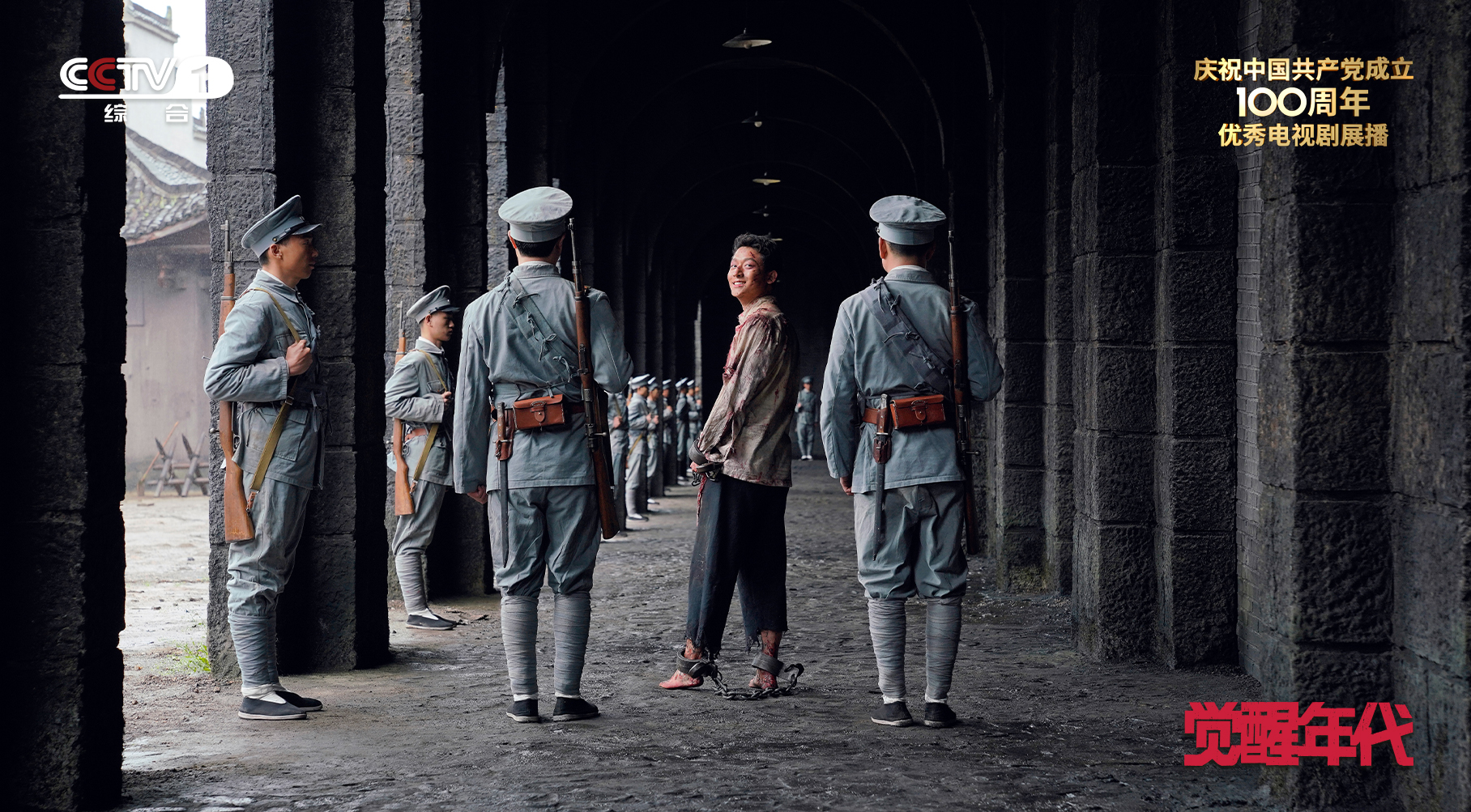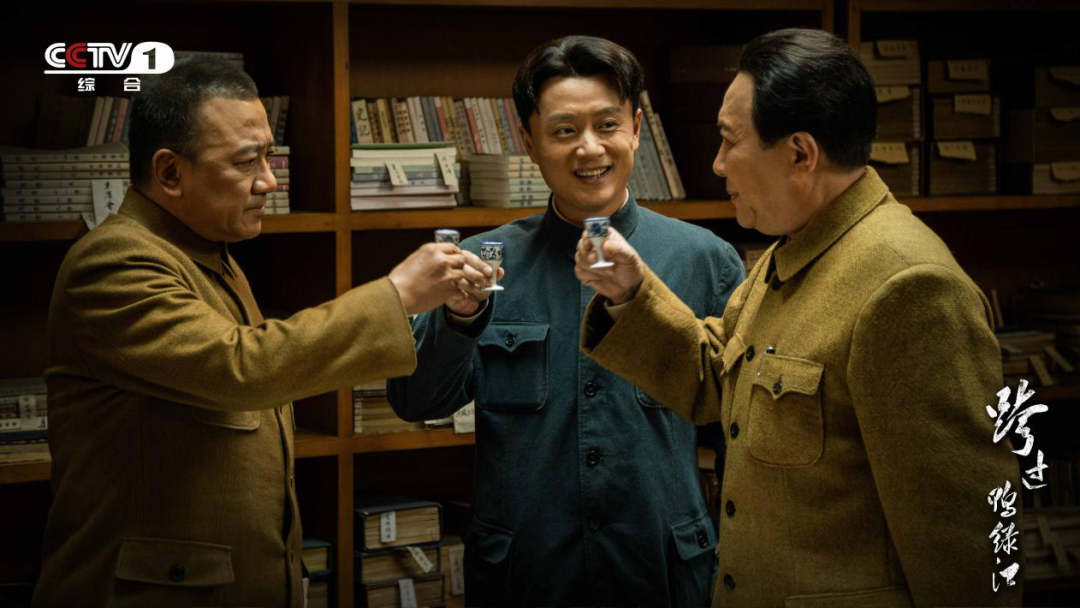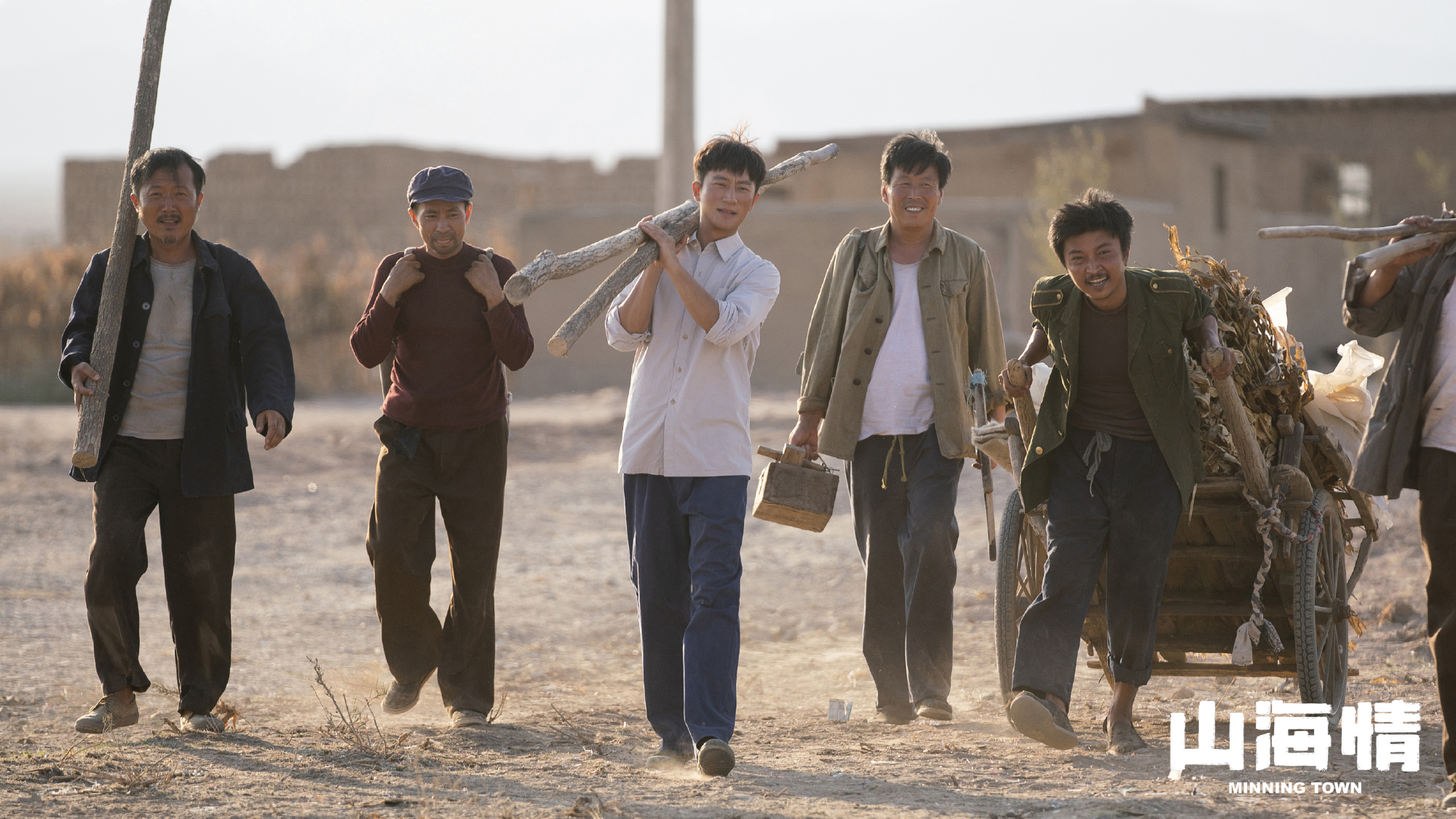With the rapid development of the times and the update and iteration of mainstream audiences, the current market demand for film and television has undergone profound changes. In order to cope with these changes, how to break through the stereotypes of theme conceptualization, theme templateization, narrative routine, and audience objectification, and achieve a leap in the way of creation has become an important proposition for the main theme TV series. Around this problem, in recent years, the creation of the main theme TV series has carried out many explorations in terms of content, form, and dissemination. In various attempts, youthful writing has become an effective way to successfully break through. Many excellent works incorporate youth elements in their creations, interpreting the complex encounters between individuals and the country, youth and the times through youth narratives, and then leading young people’s individual belief values through mainstream values, inspiring the audience’s collective resonance and broad recognition, and realizing the ideological and artistic values. Breakthroughs in many fields, this phenomenon deserves the attention and summary of the industry.
The narrative is getting younger and younger
Youth has always been an important material for TV drama creation. However, in the past, some film and television dramas focused on youth, but narrowed youth to love. In recent years, the main theme TV series have broken through this limitation. Driven by marketization and visual logic, they have chosen youth narrative techniques to present a youthful appearance in theme content, actor selection, and plot settings, and integrate mainstream narratives into youth narrative logic.

Inspiring the young generation to take on the mission
Struggle is the foundation of youth. The main theme TV series of the new era will focus on the self-growth and exploration of young people in different eras. By showing the value judgments and path choices of young people of different eras in the choice of individual development and national needs, it realizes the exchange between the narrative of the family and the country and the narrative of youth. Fusion 1 shows the majestic power and mission of the younger generation in promoting social change, enabling young audiences to achieve spiritual purification and emotional resonance in romantic youth discourses, and achieve the integration of mainstream images and young audiences' youth memory and acceptance experience.
Every generation of youth has a mission and a responsibility. Contemporary Chinese youth are walking in the same direction and advancing together with the new era, and shoulder important responsibilities. Compared with the older generation of revolutionary youth, the youth of the new era, despite their different identities and different circumstances, are equally steadfast when faced with the choice of the times. "Our New Era" focuses on youth party members and tells about their value choices and original aspirations in the face of national needs. Liu Mengyuan could have become a flight attendant under the arrangement of her family, but in order to learn aircraft manufacturing technology, she decided to stay in the sheet metal department, and eventually grew from a cleaning worker in the sheet metal department to a technical talent on her own, working for the domestic aircraft manufacturing industry. made a positive contribution to the take-off. In "The Melody of Endeavour", Lin Jie inherited the ideals of his father's generation, carried the Made in China complex and the dream of becoming a powerful country with science and technology. He changed his major during his study abroad and became a young scientific and technological talent. He returned to China to develop scientific and technological achievements belonging to the motherland, and finally developed major scientific and technological equipment such as tidal energy generator sets that can generate electricity continuously, creating a miracle that makes Chinese people proud and attracts worldwide attention.
In the images of the main theme TV series, generations of Chinese youth are full of pure hearts for the motherland and the people, and actively participate in the great cause of revolution, construction and reform. Outside the screen, young audiences were also inspired by the spirit of these characters, and they left messages in the barrage and comments: "The characters in the play have given me strength, and I will try my best to keep up with the footsteps of these passionate young people, in order to build a better China contributes."
Fits the psychology of young audiences watching dramas
The current main theme TV series not only actively move closer to young audiences in terms of narrative mode and character selection, but also consciously fit the psychology of young audiences in the context of new media. The tools for viewing episodes have evolved from TV sets to multiple mobile terminals, and the platform for episode dissemination has gradually migrated from a single TV medium to long-form video platforms and short-form video platforms. Young audiences use these new media platforms to carry out chasing and feedback activities such as real-time interaction with bullet screens, comments and messages. Through instant interaction, netizens take the initiative to intervene in the broadcast scene of the episode to obtain a virtual socialized appreciation experience. "Shan Hai Qing" became popular, and netizens expressed their appreciation for the content of the episode through barrages such as "I swiped for the second time" and "This drama must be popular". "Crossing the Yalu River" was a hit, and the comments in the comments "If faith has color, it must be China Red", etc., express the audience's love for the characters in the play and their recognition of their values.
The operation of IP resources of the drama series and the development of derivative products have also strengthened the stickiness of the relationship between the broadcast platform of the series and young audiences. In September 2021, 100 co-branded cultural and creative products of "Age of Awakening" will be unveiled at the China International Service Trade Fair. These trendy play products are integrated into the corresponding storylines, using figurative carriers to connect the image world with real life, build an emotional channel between people and works, and enrich the value implication of the drama. As a result, its values are more easily understood and recognized by young audiences.
In short, youthful exploration has become an important creative trend for the main theme TV series in the new era. The main theme TV series expresses youthful expression with youthful brushwork, realizing a win-win situation of creative optimization and communication power. The experience is worthy of in-depth summary, and can be applied to the future production and dissemination of the main theme film and television practice.
(This article was published in the 15th edition of "Guangming Daily" on May 18, 2022, which is a phased achievement of the National Social Science Fund Project "Research on the History of Chinese TV Dramas Communication Overseas [1980-2018]"; the author Wang Jiangpeng, Department of Literature, South-Central University for Nationalities With the teacher of the School of Journalism and Communication, Li Xiaoning is a master student of the School of Literature and Journalism and Communication, South-Central University for Nationalities)
The narrative is getting younger and younger
Youth has always been an important material for TV drama creation. However, in the past, some film and television dramas focused on youth, but narrowed youth to love. In recent years, the main theme TV series have broken through this limitation. Driven by marketization and visual logic, they have chosen youth narrative techniques to present a youthful appearance in theme content, actor selection, and plot settings, and integrate mainstream narratives into youth narrative logic.

"The Age of Awakening" stills
For example, The Age of Awakening shows the complex and real father-son relationship between the revolutionary ancestor Chen Duxiu and his sons Chen Yannian and Chen Qiaonian. The play first used a variety of rich plots to pave the way for the awkward and twisted state of the father and son. Due to being busy with the revolutionary cause, Chen Duxiu neglected to take care of the old and young of the Chen family, and Chen Yannian and Chen Qiaonian hated their father's unsympathy, so when they first appeared on the scene, the two would rather work hard to earn a living than accept their father's kindness. But as the brothers came to understand their father's claims and aspirations, and followed him on a path of sacrifice and dedication for the future of their country, there was a complete reconciliation between father and son. In such a narrative, Chen Duxiu seems to have become an ordinary father who has parent-child relationship problems around us. Chen Yannian and Chen Qiaonian are also no different from young people who have gradually grown up and understood their parents through social experience.
"The Age of Awakening" stills
This kind of youth narrative transforms the vast and complex historical stories and social reality into a video symbol discourse system that young audiences can easily understand, so as to skillfully internalize the heavy theme expressed in the emotional judgment and value system of the young characters themselves. In the end, it was widely recognized and resonated with young audiences.Inspiring the young generation to take on the mission
Struggle is the foundation of youth. The main theme TV series of the new era will focus on the self-growth and exploration of young people in different eras. By showing the value judgments and path choices of young people of different eras in the choice of individual development and national needs, it realizes the exchange between the narrative of the family and the country and the narrative of youth. Fusion 1 shows the majestic power and mission of the younger generation in promoting social change, enabling young audiences to achieve spiritual purification and emotional resonance in romantic youth discourses, and achieve the integration of mainstream images and young audiences' youth memory and acceptance experience.

"Crossing the Yalu River" stills
For example, in "Crossing the Yalu River", Mao Anying's characters not only fit the historical situation at that time, but also fit the psychological cognition of contemporary youth. Whether it is the smugness before going to the Korean War, or the true love story in front of the mother's tomb, the works try to deeply describe the character of this character's courage to take responsibility and sincere emotion, and also draw the outstanding young people in a special historical context. The theme of self-worth realization and fulfilling the mission of the country and country.Every generation of youth has a mission and a responsibility. Contemporary Chinese youth are walking in the same direction and advancing together with the new era, and shoulder important responsibilities. Compared with the older generation of revolutionary youth, the youth of the new era, despite their different identities and different circumstances, are equally steadfast when faced with the choice of the times. "Our New Era" focuses on youth party members and tells about their value choices and original aspirations in the face of national needs. Liu Mengyuan could have become a flight attendant under the arrangement of her family, but in order to learn aircraft manufacturing technology, she decided to stay in the sheet metal department, and eventually grew from a cleaning worker in the sheet metal department to a technical talent on her own, working for the domestic aircraft manufacturing industry. made a positive contribution to the take-off. In "The Melody of Endeavour", Lin Jie inherited the ideals of his father's generation, carried the Made in China complex and the dream of becoming a powerful country with science and technology. He changed his major during his study abroad and became a young scientific and technological talent. He returned to China to develop scientific and technological achievements belonging to the motherland, and finally developed major scientific and technological equipment such as tidal energy generator sets that can generate electricity continuously, creating a miracle that makes Chinese people proud and attracts worldwide attention.
In the images of the main theme TV series, generations of Chinese youth are full of pure hearts for the motherland and the people, and actively participate in the great cause of revolution, construction and reform. Outside the screen, young audiences were also inspired by the spirit of these characters, and they left messages in the barrage and comments: "The characters in the play have given me strength, and I will try my best to keep up with the footsteps of these passionate young people, in order to build a better China contributes."
Fits the psychology of young audiences watching dramas
The current main theme TV series not only actively move closer to young audiences in terms of narrative mode and character selection, but also consciously fit the psychology of young audiences in the context of new media. The tools for viewing episodes have evolved from TV sets to multiple mobile terminals, and the platform for episode dissemination has gradually migrated from a single TV medium to long-form video platforms and short-form video platforms. Young audiences use these new media platforms to carry out chasing and feedback activities such as real-time interaction with bullet screens, comments and messages. Through instant interaction, netizens take the initiative to intervene in the broadcast scene of the episode to obtain a virtual socialized appreciation experience. "Shan Hai Qing" became popular, and netizens expressed their appreciation for the content of the episode through barrages such as "I swiped for the second time" and "This drama must be popular". "Crossing the Yalu River" was a hit, and the comments in the comments "If faith has color, it must be China Red", etc., express the audience's love for the characters in the play and their recognition of their values.

Stills of "Shan Hai Qing"
Under the multi-screen chasing drama, young audiences are not limited to watching the set content of the drama, but regard the plot, characters, scenes, etc. as resources for secondary creation, and combine their personal understanding of history and characters to construct new scenes and languages. environment, so that the theme carried by the work can be spread in a wider range. For example, some netizens have turned the actors' superb performances in the play into emojis. Whether it is Cai Yuanpei's "Senior Chen Duxiu, please sit down" or Ma Defu's "I have no love", they have all become the talk of young audiences in their daily interactions. Others examine and expand the content involved in the plot, and deepen their understanding of historical stories, historical figures and the spiritual connotations hidden in them by comparing historical facts and dramatic stories.The operation of IP resources of the drama series and the development of derivative products have also strengthened the stickiness of the relationship between the broadcast platform of the series and young audiences. In September 2021, 100 co-branded cultural and creative products of "Age of Awakening" will be unveiled at the China International Service Trade Fair. These trendy play products are integrated into the corresponding storylines, using figurative carriers to connect the image world with real life, build an emotional channel between people and works, and enrich the value implication of the drama. As a result, its values are more easily understood and recognized by young audiences.
In short, youthful exploration has become an important creative trend for the main theme TV series in the new era. The main theme TV series expresses youthful expression with youthful brushwork, realizing a win-win situation of creative optimization and communication power. The experience is worthy of in-depth summary, and can be applied to the future production and dissemination of the main theme film and television practice.
(This article was published in the 15th edition of "Guangming Daily" on May 18, 2022, which is a phased achievement of the National Social Science Fund Project "Research on the History of Chinese TV Dramas Communication Overseas [1980-2018]"; the author Wang Jiangpeng, Department of Literature, South-Central University for Nationalities With the teacher of the School of Journalism and Communication, Li Xiaoning is a master student of the School of Literature and Journalism and Communication, South-Central University for Nationalities)










Comments